Lecture summary :
This week we get to learn about how the design develops during the industrial revolution. The appearance of the modern front like Bodoni and Didot which commonly used in the fashion magazine ( Bazaar magazine). The increasing need for cheaper printing which leading to the jobbing printer and also the downfall of craftsmen. Wooden type was invented and became popular since it is cheaper and lighter to use. Moreover, we also see the first comic book which created as a newspaper supplement. I was interested in the Ukoyo-e woodblock print of Japan since it is so different compared to the Europe illustration style. The Japanese have their interpretation of using perspective, colours which make their artwork look fascinating. Moreover, I love how they simplify everything down to please the eye. To my knowledge, The Japanese art style strongly influenced European artists as we began to see some western artwork with Japanese’s clothing pattern and abstract details.
Woman fashion during the Edo period
*When we think about a costume we have to consider the undergarment first.
Many undergarments and accessories are required to wear kimono and in Japan the undergarment called hadajuban and it also known as ” asetori” (soak up sweat). There are two type of hadajuban, the first one is one- piece type and the second one is separate to two pieces. People tend to like the second type more but the first type also really popular among kimono beginner.
In order to feel more comfortable while wearing kimono, Japanese also have different hadajuban’s fabric for the four season. In the summer, people would likely to wear more breezy, breathable hadajuban and a warmer, heat-retaining material during the winter
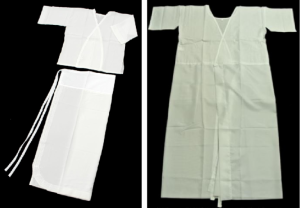
.* Accessories
During the Edo period (1603-1868), fashion was significant for both women and men in Japan. Kimonos made from silk and brocade and to add more details to the entire outfit they would also wear Kanzashi ( woman hair ornament). Also, the creation of Kanzashi started from The Jomon period, but the real development of Kanzashi began during the Edo period with an enormous variety of styles and designs.
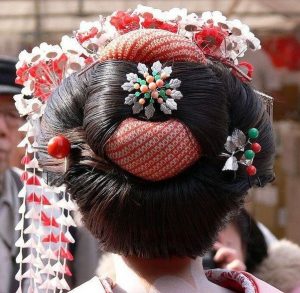
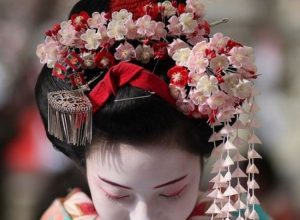
Geta or Japanese footwear gained its popularity during the Edo period as people started to wear it for fashion. As the result,the skill of making Geta improved and more stores started selling them in high number. We now have many types of Geta to choose from such as Ippon Geta, Tengu Geta, Okobo Geta, and the list goes on.
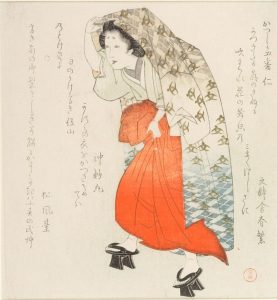
Kimono evolution rose significantly during the Edo period, and it reached its maturity that we can see in the modern day kimono’s design . The Kosode or kimono with smaller sleeves got popular during this period even though it was considered as a form of undergarment. However, city people began to wear it as a form of outwear. Kosode then created a trend within the society which adapted by all ages, genders, and classes.
.
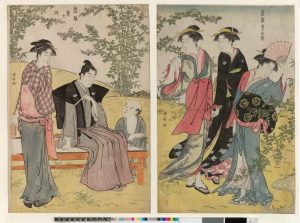
Different types of Kosode with a variety of colours and designs on the fabric were adopted in this period and citizen’s kosode style was based on their class. Notably, the design on the fabric of kosode was dramatically altered in the middle of the Edo period since the dyeing technique called ”Yûzen dyeing” was invented during the Edo period. People suddenly able to use as many colours as they wanted on the fabric. As a result, designers started to produced more Kosobe with a vast range of patterns.
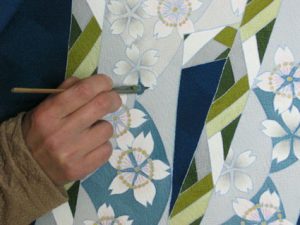
Edo native began to feel a need to create their own style, having a real aesthetics of a real city person . Japanese in this period prefer wearing solid colour, small pattern prints and vertical stripe designs as their regular day clothing. Colours such as browns, grays and indigo blues were famous. However, they would also spend a massive amount of money on clothing with lining fabric, vivid colors and textiles. Since the then government banned people from using expensive fabrics for clothing, the Japanese felt the need to be more rebellious, so they did the exact opposite and found a way to get away with it. Japanese would wear the modest clothing outside and have all the refined details in their inner garment which no one else can see.
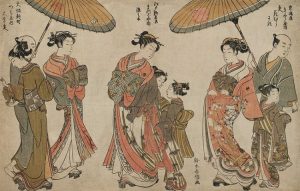
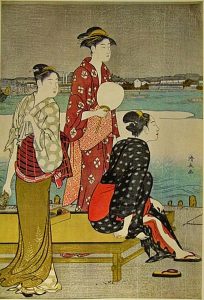
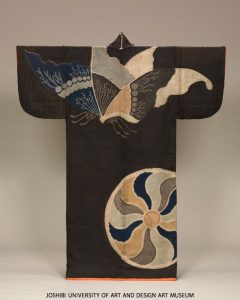
Source:
http://japanese-kimono.net/what-is-hadajuban/
https://www.library.metro.tokyo.jp/portals/0/edo/tokyo_library/english/fashion/page2-1.html
